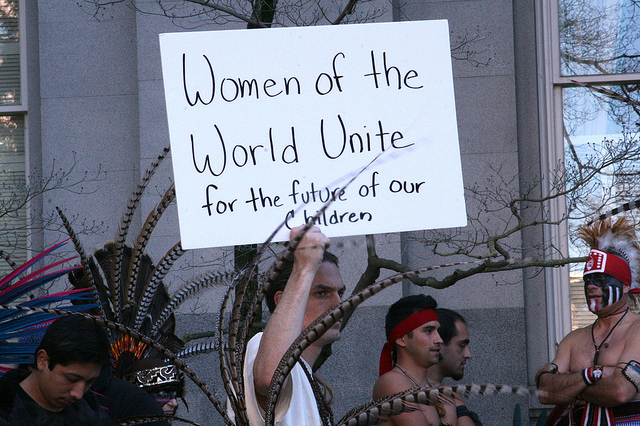
Centuries after the first pilgrims and Indians came together in peace to give thanks (so the story goes), Native American youth have nothing close to peace. A new 120-page report from the Attorney General’s Advisory Committee on American Indian and Alaska Native Children Exposed to Violence screams that they are in crisis.
Violence Plus Poverty
As reported in The Washington Post, Native American children “face unprecedented challenges” of violence and extreme poverty that hurt their minds as much as their bodies, on top of the “historical trauma” that they carry. The combination of violence and poverty fuels more issues: compromised neurological development, poor health in all aspects, unsatisfactory scholastic performance, unhealthy substance abuse and a high rate of participation in the juvenile justice system.
In 2014, Native American youth are fighting battles that they can’t win at home. The report concluded that they experience post traumatic stress disorder (PTSD) at the same rate as returning veterans who fought in war-torn Iraq and Afghanistan. Compared to the rest of the American youth, they experience PTSD at triple the rate. The consequences can be fatal; it’s not a coincidence that Native American youth are twice as likely as any other group to die before 24.
Legal Loopholes and Losing Funding
The legal system isn’t helping them either. Last year, Congress did pass a law where federally recognized tribes could prosecute non-Indians for domestic violence against women in tribal territory. But there’s a giant loophole: non-Indians can’t be prosecuted for crimes against Native American youth in tribal territory.
As common sensical as the proposed law seems (if Native American women need protection, then why wouldn’t their children need it?), there’s always a chance that it won’t get passed. ThinkProgress explains that “political resistance,” mostly from Republicans, is to be expected since many don’t want to give tribes more authority or autonomy. And frankly, that needs to change.
The tribal legal system is far from perfect. And it doesn’t help that the U.S. government doesn’t adequately support it. It’s hard enough to get basic governmental services in tribal territory. The Interior Department pumps money into the tribal legal system, but unsurprisingly those funds are super low, and it’s getting alarmingly lower every year. The Washington Post describes how the main grant from the Justice Department that protects Native American children fell from $25 million in 2010 to only $5 million in 2014.
Change From the Top
If real change is going to happen, then it needs to start from the top. That legal loophole needs to be closed: non-Indians who abuse Native American youth can’t get away with it and should be prosecuted in tribal territory. In light of this eye-opening report, it’s clear that the Justice Department should consider making budget cuts elsewhere, not cutting funding that is helping Native American youth.
Furthermore, Native American youth deserve better than to live in squalor. Many live in third world living conditions, and the Department of Housing and Urban Development needs to fix that. Basic shelter and basic running water aren’t luxuries, they’re rights. Young people also need proper places to hang out, so they stay off the streets and, hopefully, stay out of trouble.
There also needs to be more Native American representation in leadership. The panel of the report suggests a “fully staffed Native American Affairs Office in the White House” by May 2015. One senior official should oversee the welfare of Native American and Alaska Native youth.
The U.S. government has had centuries to remedy the injustices of the past. Instead, it chooses to turn a blind eye to suffering children and youth. Thanks to this report, there’s no doubt that change needs to happen, but if it will ever come remains to be seen.
Press freedom is under attack
As Trump cracks down on political speech, independent media is increasingly necessary.
Truthout produces reporting you won’t see in the mainstream: journalism from the frontlines of global conflict, interviews with grassroots movement leaders, high-quality legal analysis and more.
Our work is possible thanks to reader support. Help Truthout catalyze change and social justice — make a tax-deductible monthly or one-time donation today.